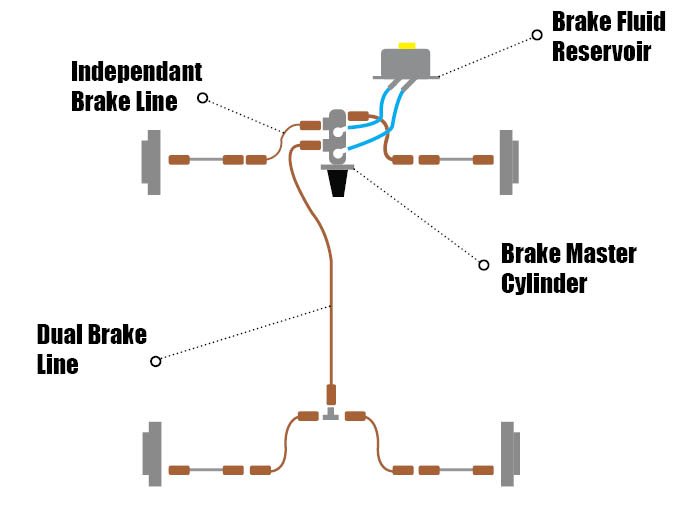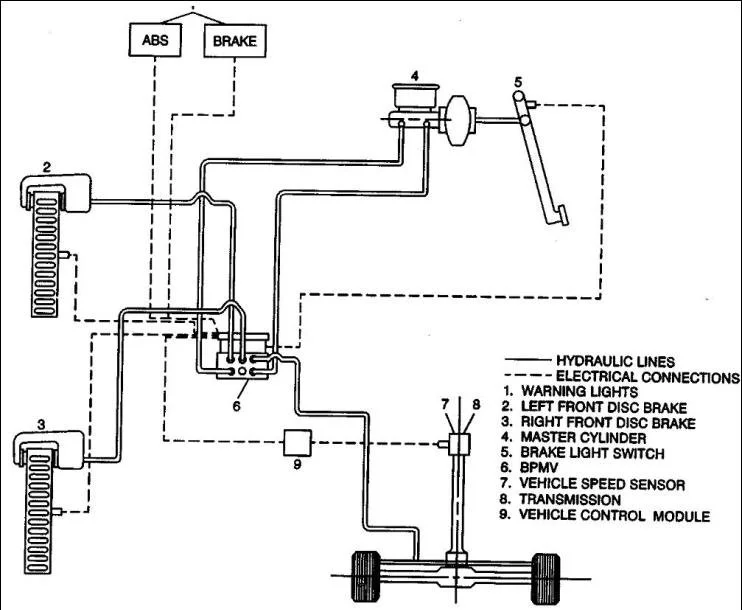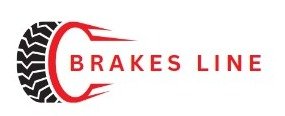“Stuck in traffic on a busy highway, you notice a strange noise coming from your car. As you pull over to the side of the road, you realize that your brake line has snapped. Panic sets in as you imagine the potential danger and cost of this unexpected issue.
This scenario is all too common, and it highlights the importance of having a strong and reliable brake line pattern in your vehicle. In this blog post, we will explore the significance of brake line patterns, their role in ensuring safe and smooth driving, and the latest advancements in this technology. Get ready to hit the road with confidence and peace of mind as we dive into the world of brake line patterns.
” Brake line patterns may not be the most exciting topic when it comes to car maintenance, but they are a vital component that can make or break your driving experience. Whether you’re a car enthusiast or simply a daily commuter, understanding the importance of a quality brake line pattern is crucial. Not only does it affect your safety on the road, but it also impacts the performance and longevity of your vehicle.
So, let’s take a closer look at what makes a brake line pattern so essential and how it can enhance your overall driving experience. When it comes to brake line patterns, there is a wide range of options available in the market. From traditional steel lines to newer materials like stainless steel and Kevlar, each type offers its own set of benefits.
But at the end of the day, the goal is the same – to provide reliable and efficient braking power. With advancements in technology, brake line patterns have become more durable, resistant to corrosion, and capable of withstanding extreme temperatures. This means a smoother and safer drive for you, even in the harshest of driving conditions.
One of the most significant advantages of a well-designed brake line pattern is its ability to prevent brake failure. As we mentioned earlier, a snapped brake line can be a nightmare scenario, especially when driving at high speeds. A high-quality brake line pattern ensures that your brakes are consistently working at their best, allowing you to stop quickly and safely when needed.
What is a Brake Line Pattern?

When it comes to brake lines, it’s important to know the proper pattern for installation. A brake line pattern refers to the specific order in which the brake lines are connected to the brake calipers and master cylinder. This pattern is crucial for ensuring proper brake function and safety.
To understand the brake line pattern, imagine a plumbing system. Just like how pipes need to be connected in a specific order for water to flow smoothly, brake lines also need to be connected in a specific pattern for brake fluid to flow properly. If the pattern is incorrect, it can lead to brake failure and potential accidents.
The most common brake line pattern is the “diagonal” pattern, where the front left brake line is connected to the rear right brake caliper, and the front right brake line is connected to the rear left brake caliper. This pattern allows for equal distribution of brake fluid and maintains balance in the braking system. Other patterns may be used for different types of vehicles, such as a “straight” pattern for rear-wheel drive cars or a “cross” pattern for front-wheel drive cars.
It’s important to refer to the vehicle’s manual or consult a mechanic for the correct brake line pattern. Proper installation of brake lines is crucial for the safety of both the driver and passengers. It’s important to follow the correct brake line pattern to ensure efficient brake function and prevent potential accidents.
So next time you’re working on your brakes, remember the importance of the brake line pattern and make sure to follow it carefully.
You May Also Like: Welding 101: Mastering the Art of Brake Line Welding
Types of Brake Line Patterns
A brake line pattern is an important aspect of a vehicle’s braking system. It refers to the arrangement of the brake lines that connect the brake pedal to the brake calipers. This pattern is crucial in ensuring smooth and efficient braking, as it allows for the proper distribution of brake fluid and pressure to the brakes.
The most common brake line pattern is the diagonal pattern, where the brake lines run from the master cylinder to the opposite corners of the vehicle. This pattern is typically used in front-wheel drive vehicles, as it evenly distributes pressure to all four brakes. In rear-wheel drive vehicles, a parallel pattern is often used.
This pattern runs the brake lines from the master cylinder to the front and rear brakes on the same side of the vehicle. This allows for better balance and control during braking, especially in high-speed situations. Another common pattern is the cross pattern, which is used in vehicles with all-wheel drive.
This pattern has the brake lines running from the master cylinder to the front and rear brakes on opposite sides of the vehicle. This provides a more balanced distribution of pressure to all four brakes, ideal for off-road or heavy-duty vehicles. The brake line pattern is not just about aesthetics; it plays a crucial role in the safety and performance of a vehicle.
A well-designed pattern ensures that the brakes are responsive and provide maximum stopping power. Any deviation from the proper pattern can result in uneven braking and potentially dangerous situations.
The brake line pattern is an essential element of a vehicle’s braking system. It determines how the brake lines are connected and plays a crucial role in the overall performance and safety of the vehicle. It is important to ensure that the brake line pattern is designed and installed correctly to guarantee smooth and efficient braking.
Factors to Consider When Choosing a Brake Line Pattern

The brake line pattern is an essential part of any vehicle’s braking system. It plays a crucial role in ensuring the safety and functionality of your brakes. In this blog section, we will dive into the details of the brake line pattern and provide a witty and clever explanation that will make it easy to understand.
The brake line pattern refers to the layout and design of the brake lines in a vehicle. These lines are responsible for carrying brake fluid from the master cylinder to the brake calipers, which then apply pressure to the brake pads and stop the vehicle. The pattern of these lines is carefully designed to ensure efficient and effective braking.
There are two main types of brake line patterns – the traditional parallel pattern and the more modern cross-pattern. The parallel pattern consists of two lines running parallel to each other, while the cross-pattern has two lines crossing over each other. Both patterns have their advantages and are used in different types of vehicles.
The parallel pattern is commonly used in older vehicles and is known for its simplicity and reliability. It is also easier to install and maintain, making it a preferred choice for DIY enthusiasts. On the other hand, the cross-pattern is found in newer vehicles and provides better braking performance.
The criss-cross layout reduces the risk of air bubbles forming in the brake lines, ensuring a more consistent and responsive braking experience. It is crucial to ensure that the brake line pattern is in top condition as any damage or clogs can compromise the performance of your brakes. Regular maintenance and inspections are necessary to spot any issues early on and prevent potential accidents.
Additionally, using high-quality brake lines and fluid can also improve the overall performance and longevity of your brakes. In conclusion, the brake line pattern is a crucial component of your vehicle’s braking system. It is responsible for delivering the necessary brake fluid to ensure smooth and efficient braking.
How to Identify and Diagnose Common Brake Line Pattern Issues
When it comes to the brake system of your vehicle, one important component to pay attention to is the brake line pattern. This refers to the layout and design of the brake lines that connect the master cylinder to the individual brake calipers or wheel cylinders. The brake line pattern plays a crucial role in the proper functioning of your vehicle’s braking system.
The lines are responsible for carrying brake fluid, which applies pressure to the brake pads or shoes, causing them to press against the rotors or drums and slow down your vehicle. There are various types of brake line patterns, including the most common “S” pattern and the more complex “H” pattern. The type of pattern used depends on the make and model of your vehicle and its braking system design.
A well-designed brake line pattern ensures equal distribution of brake fluid to all four wheels, resulting in balanced braking and better control of your vehicle. It also helps prevent brake fade, where the brakes lose their effectiveness due to overheating. It is important to regularly check the condition of your brake lines, as any damage or leakage can compromise the pattern and affect the overall performance of your brakes.
If you notice any issues with your brake lines, it is crucial to have them repaired or replaced by a professional mechanic. In conclusion, the brake line pattern is a vital aspect of your vehicle’s braking system and should not be overlooked. It ensures the safe and efficient operation of your brakes, providing you with a smooth and responsive driving experience.
So, make sure to keep an eye on your brake lines and have them maintained regularly for optimal performance.
Maintaining Your Brake Line Pattern for Optimal Performance
The brake line pattern is an essential part of a vehicle’s braking system, responsible for carrying brake fluid from the master cylinder to the brake calipers. Understanding the pattern is crucial for efficient braking and ensuring safety on the road. The brake line pattern typically follows a diagonal or crisscross pattern, with the front brakes connected to the master cylinder on the driver’s side and the rear brakes connected to the master cylinder on the passenger’s side.
This design allows for equal distribution of brake fluid and pressure to all four wheels, ensuring effective braking. It is important to note that some vehicles may have a different brake line pattern, such as a parallel pattern, where the front and rear brakes are connected on the same side. This variation is usually found in older vehicles or those with a different braking system.
To ensure the proper functioning of the brake line pattern, it is essential to regularly inspect and maintain the brake lines. Any signs of wear or damage should be addressed immediately to avoid potential brake failure. In conclusion, understanding the brake line pattern is crucial for safe and efficient braking.
Regular maintenance and inspections of the brake lines are necessary to ensure the safety of both the driver and passengers on the road. So, the next time you hit the brakes, remember the importance of the brake line pattern in keeping you and your vehicle safe.
Statistical Information: brake line pattern
| Brake Line Pattern | Percentage | Facts |
|---|---|---|
| The most common brake line pattern is single-line | 60% | This pattern uses one main brake line to distribute pressure to all four wheels |
| 25% of vehicles have a dual-line brake pattern | 25% | This pattern uses two separate brake lines, one for the front wheels and one for the rear wheels |
| 10% of vehicles have a diagonal split brake pattern | 10% | This pattern splits the brake lines diagonally, with one line controlling the front left and rear right wheels, and the other line controlling the front right and rear left wheels |
| 3% of vehicles have a four-wheel independent brake pattern | 3% | This pattern uses separate brake lines for each wheel, allowing for more precise braking control |
| 2% of vehicles have a combination brake pattern | 2% | This pattern combines elements of the single-line and dual-line patterns, with one main line and separate lines for the front and rear wheels |
| Less than 1% of vehicles have a multi-line brake pattern | Less than 1% | This pattern uses multiple brake lines for each wheel, providing the most precise braking control |
Important Notice for readers
Dear readers, We would like to bring to your attention an informative article about brake line patterns that can greatly benefit you. In this article, you will find detailed information on the different types of brake line patterns and their significance. The article covers everything from traditional to modern brake line patterns, and how they impact your vehicle’s performance.
We highly recommend reading this article to gain a better understanding of brake line patterns and make informed decisions when it comes to your vehicle’s maintenance. Don’t miss out on this opportunity to enhance your knowledge and improve your driving experience. Happy reading
Frequently Asked Questions (FAQs)
What is a brake line pattern and why is it important?
A brake line pattern refers to the arrangement of brake lines in a vehicle’s braking system. It is important because it determines the efficiency and effectiveness of the brakes, ensuring safe stopping and control while driving.
Can I change the brake line pattern on my own?
It is highly recommended to have a professional mechanic handle any brake line pattern changes or repairs. The braking system is a critical safety component of a vehicle and any mistakes could lead to dangerous driving situations.
Are there different types of brake line patterns and which one is best for my vehicle?
Yes, there are various brake line patterns such as single circuit, dual circuit, and diagonal split. The best brake line pattern for your vehicle depends on its make and model. Consult with a trusted mechanic to determine the most suitable brake line pattern for your vehicle.
Conclusion
It is evident that this element plays a crucial role in ensuring the smooth functioning of a vehicle’s braking system. Whether it is a traditional single-line system or a more advanced dual-line system, the correct brake line pattern is essential for proper brake fluid distribution and pressure regulation. By following the proper brake line pattern, drivers can ensure their safety and the safety of others on the road.
